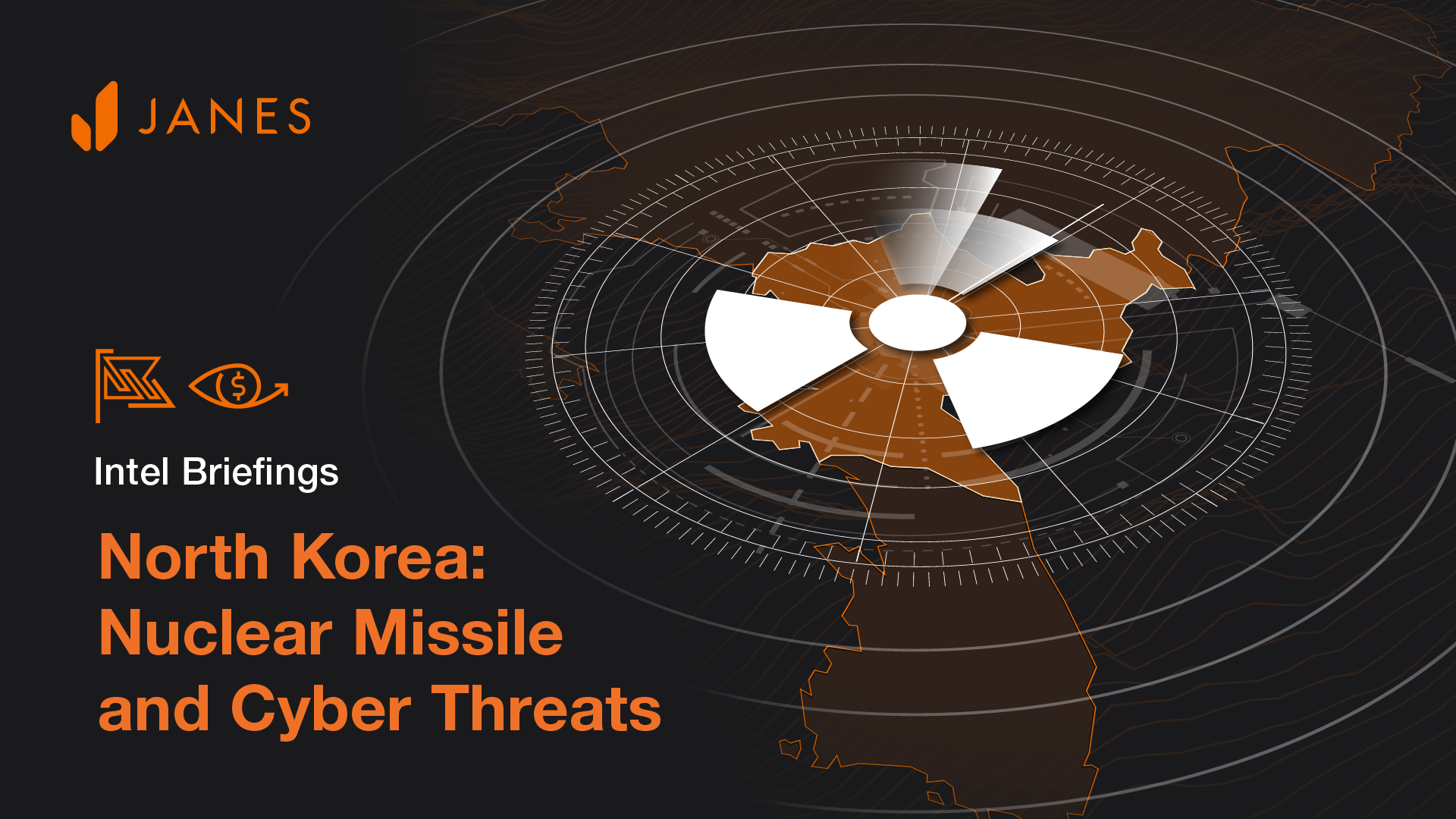
North Korea continues to present a threat to regional and global security and stability. In this intelligence briefing Janes analysts provide a current assessment of the primary threats North Korea presents, including an overview of the country's nuclear programme, ongoing missile development, and cyber activities.
Transcript
Hello and welcome to today's online intelligence briefing focusing on North Korea as a threat actor and covering the country's nuclear, missile and cyber threats.
I would like to highlight that the information used to compile today's presentation has been drawn from a variety of Janes content including Janes CBRN, military capabilities and PMESII reports as well as analyst insights and these can all be found on the Janes customer site. Introduction to North Korea's nuclear program.
The origin of North Korea's nuclear weapons program can be traced to the 1950s with the establishment of the Atomic Energy Research Institute and the Academy of Sciences in December 1952.
In the 1980s, North Korea constructed uranium milling facilities, a fuel rod fabrication complex and a five megawatt nuclear reactor as well as research and development institutions.
Simultaneously, North Korea began experimenting with high explosive tests required to build the triggering mechanism of a nuclear bomb.
Although there have been various diplomatic efforts to negotiate with North Korea to stop and roll back its nuclear weapons program. As of July 2023 North Korea has conducted six nuclear tests.
The first test was in October 2006 following the collapse of the negotiations involving North Korea, China, Japan, Russia, South Korea and the United States.
The most recent nuclear test was in September 2017.
However, the country has continued to develop its nuclear weapons capability since then.
Nuclear weapons play a central role in North Korea's military planning as they significantly augment the country's offensive and defensive capabilities.
North Korea is unable to compete militarily with the US or South Korea when it comes to conventional capabilities.
The nuclear weapons represent its best form of deterrence against any potential US or South Korean military action.
The objective of nuclear weapons is to signal that any US military intervention would lead to unacceptable levels of casualties for the US and its allies. Even if the regime in Pyongyang is dismantled, the security of the regime is thus assured against external threats.
Nuclear weapons also served to highlight supreme leader of North Korea, Kim Jong Un as a strong and successful leader whose position of the weapons protects the country.
In his 2018 New Year's address, he said our country's nuclear forces are capable of thwarting and countering any nuclear threats from the United States and they constitute a powerful deterrent that prevents the US from starting an adventurous war in no way would the United States dare to ignite a war against me and our country.
Several factors have likely influenced North Korea's missile development program in 2022 and 2023.
Domestic.
It is likely that the North Korean regime uses its weapons test to support the narrative that it is strong and capable of protecting the population of the country from external threats.
In 2022 since North Korea, very likely faced acute food insecurity, a weakened economy because of the country's strict border closures in response to the COVID-19 pandemic and an admission of a COVID-19 outbreak demonstrating successful missile launches likely supported the regime in portraying an image of strength.
Pyongyang's focus on developing its missile capability also aligned with the country's five year plan announced at the ruling working party of Korea's eighth congress that was held in January 2021. Kim said this plan was intended to modernize the Korean people's army and to enable it to quote, fight a war at the highest level end quote and specifically acknowledged the development of ICBMs hypersonic capabilities and SLBMs as being in support of this goal.
External.
It is very likely that North Korea's pattern of missile launches in 2022 and 2023 is in part influenced by the military and political activities of the US and South Korea which usually consist of bilateral meetings and military exercises.
Pyongyang views these activities as significant threats to the country's survival and therefore very likely used such activities to justify missile launches.
To this end, Pyongyang very likely used its missile launch capabilities as a show of strength against this perceived threat.
In addition to the threats that North Korea's missile and nuclear programs pose the country is also an active perpetrator of cyber attacks. And many malicious cyber groups operating from numerous locations have been linked to the North Korean regime.
Many of these groups such as Kimsuky and the Lazarus group are very likely to fall under the Reconnaissance General Bureau which is North Korea's main foreign Intelligence agency and its sub organisations.
However, because of North Korea's opaque structures and operation, it is difficult to accurately attribute specific cyber groups to specific organisations.
The exact number of North Korea's cyber workforce is also difficult to obtain but public estimates including ones by the South Korean government estimate that North Korea has around 6000 malicious cyber operatives as of 2022.
Many of North Korea's cyber actors operate from outside North Korea.
And although they are primarily located in China and Russia operatives linked to North Korea's cyber operations have also been traced to a small number of countries across Africa and South and Southeast Asia. Primary target of North Korea's cyber attacks are largely public and private organizations based in the US and South Korea.
However, the reach is much broader.
For example, in 2017, a ransomware attack linked to North Korea impacted public and private entities in more than 150 countries.
Looking ahead, it is almost certain that North Korea's missile, nuclear and cyber activities will persist as significant threats.






